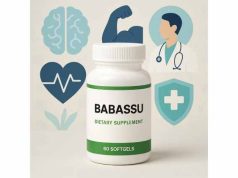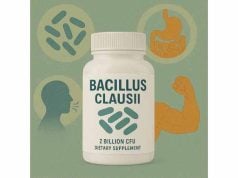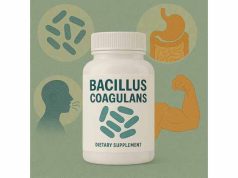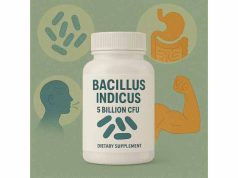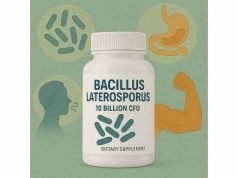
Is bayberry bark a forgotten herbal remedy with powerful benefits? This unique North American shrub has deep roots in traditional wellness practices, yet modern research is only beginning to uncover its real value. Bayberry bark offers a compelling blend of antioxidant, anti-inflammatory, and astringent effects that may support immune health, digestion, and even natural wound healing. Whether you’re curious about natural ways to ease cold symptoms, looking for gentle digestive support, or just want to understand this plant’s science-backed uses, this guide delivers the latest facts. Let’s explore what makes bayberry bark stand out, how it works, its proven benefits, ideal dosages, and how to use it safely. Here’s what you need to know about this fascinating herbal supplement.
Key Takeaways
- Bayberry bark is best known for supporting immune health, digestive comfort, and wound healing, thanks to its natural astringent and anti-inflammatory properties.
- It contains powerful plant compounds like tannins and flavonoids that help fight oxidative stress and may reduce the duration of colds and respiratory issues.
- Safe use requires proper dosage—typical recommendations range from 400–800 mg daily, though traditional teas and tinctures may differ.
- Side effects are uncommon but may include digestive upset at high doses; always check for interactions with medications or existing conditions.
- Bayberry bark supplements are not a cure-all, but they offer a gentle, multi-targeted approach for those seeking natural wellness support.
Table of Contents
- Bayberry Bark Overview: Nature, Traditional Uses, and Modern Interest
- How Bayberry Bark Works: Science Behind Its Effects on the Body
- Proven Benefits and Evidence-Based Uses of Bayberry Bark
- Safety Profile: Potential Side Effects and Interactions of Bayberry Bark
- Bayberry Bark Dosage: Recommendations, Usage Guidelines, and Best Practices
- Frequently Asked Questions About Bayberry Bark Supplements
Bayberry Bark Overview: Nature, Traditional Uses, and Modern Interest
Bayberry bark comes from the roots and lower stems of the Myrica cerifera shrub, a hardy, aromatic plant native to the eastern United States. For centuries, this plant has been a cornerstone of Native American herbal traditions and later became a staple in colonial American folk medicine. Bayberry’s distinctive grayish bark, once prized for candle-making due to its fragrant wax, has always played a key role in wellness rituals and natural healing.
What is Bayberry Bark?
Bayberry bark refers specifically to the dried outer root and lower stem of the Myrica cerifera plant. The bark is packed with tannins—plant compounds responsible for its dry, puckering taste—and flavonoids, known for their antioxidant power. Its astringency means it can tighten tissues, making it useful in traditional remedies for sore throats, diarrhea, and minor wounds.
Historical and Folk Uses
Across the American South, bayberry bark was brewed into teas and infusions for managing cold symptoms, fevers, and digestive complaints. Native American healers valued it as a wash for skin irritations and wounds. Colonial settlers later adopted it as a home remedy for everything from gum disease to excessive sweating.
Bayberry’s reputation as an astringent helped it earn a place in early Western herbal medicine, where it was listed in some 19th-century pharmacopoeias. The bark’s applications spanned:
- Digestive support: Reducing diarrhea and easing intestinal inflammation
- Respiratory relief: Easing sore throat, coughs, and nasal congestion
- Wound care: Applied as a poultice for minor skin injuries or irritation
Modern Rediscovery
Today, there’s a resurgence of interest in bayberry bark, especially among those seeking gentle, plant-based supplements. Its traditional uses are being revisited as research explores how its bioactive compounds might deliver immune and digestive support. Natural health practitioners may suggest bayberry bark in forms such as capsules, tinctures, teas, or topical preparations, often as part of a holistic wellness plan.
Modern supplement users choose bayberry bark for its:
- Natural antioxidant content (fighting oxidative stress)
- Anti-inflammatory potential (soothing irritated tissues)
- Gentle astringency (tightening and toning mucous membranes)
While the bark is rarely used alone for major illnesses, it is valued as a supportive remedy—helping ease mild symptoms, complement other herbs, and support the body’s natural healing response.
Botanical Characteristics
Bayberry shrubs are evergreen or semi-evergreen, growing up to 12 feet tall, and are easily recognized by their aromatic leaves and small, waxy berries. The plant is hardy, drought-resistant, and often found in sandy coastal regions or pine barrens, thriving where few others can. The bark is harvested in late fall or early winter when tannin content is highest, then carefully dried to preserve its active properties.
Supplement Forms Available
- Powdered capsules: Convenient for standardized dosing
- Liquid tinctures: Traditional herbal extraction, easy to blend
- Loose bark: For DIY teas or poultices (less common commercially)
- Topical ointments: Occasionally found in natural skin care
Regulatory Status
Bayberry bark is classified as a dietary supplement in the U.S., meaning it is not regulated as strictly as pharmaceutical drugs. Quality can vary significantly, so it’s essential to choose reputable brands that test for purity and potency.
Who Should Consider Bayberry Bark?
- Adults seeking natural support for mild cold or digestive issues
- Those interested in traditional herbal remedies with modern scientific backing
- Individuals who prefer plant-based supplements over synthetic options
Limitations and What It Can’t Do
It’s important to recognize that bayberry bark is not a cure for serious infections, chronic gastrointestinal diseases, or any medical emergency. Its benefits are best seen as mild to moderate support within a healthy lifestyle.
The Bottom Line
Bayberry bark stands out as a time-tested herb, now supported by emerging science, that offers gentle yet meaningful support for common wellness concerns. Its combination of tradition, safety, and biological activity makes it a smart option for those seeking a holistic approach to health.
How Bayberry Bark Works: Science Behind Its Effects on the Body
Understanding how bayberry bark interacts with the body’s systems requires a closer look at its bioactive ingredients and their influence on cellular and immune pathways. Unlike pharmaceutical drugs that target a single process, bayberry bark delivers a symphony of plant compounds, each working in complementary ways.
Key Active Compounds in Bayberry Bark
- Tannins: These astringent molecules bind to proteins on mucous membranes, helping to reduce excess secretions and tighten tissues. Tannins are also known for their antimicrobial and anti-inflammatory effects.
- Flavonoids: Plant-based antioxidants that protect cells from oxidative damage, support circulation, and may modulate immune responses.
- Triterpenes: Compounds with potential anti-inflammatory and immune-modulating properties, contributing to bayberry’s traditional uses for colds and inflammation.
Mechanism of Action: How Bayberry Bark Affects the Body
1. Astringency and Tissue Tightening
Bayberry’s high tannin content creates a drying, tightening effect on mucous membranes (the moist tissues lining the mouth, throat, and digestive tract). This can help:
- Reduce minor bleeding by promoting clotting
- Soothe sore throat by tightening inflamed tissue
- Alleviate mild diarrhea by decreasing fluid loss from the intestines
This astringent action explains why bayberry bark was historically used for both oral care and digestive complaints.
2. Antioxidant Defense
Flavonoids and other polyphenols in bayberry bark act as scavengers of free radicals—unstable molecules that can damage DNA, proteins, and cells over time. By neutralizing these molecules, bayberry bark supports:
- Reduced oxidative stress throughout the body
- Healthier immune system function
- Better tissue recovery following inflammation or mild injury
Antioxidant support is especially valuable for overall wellness, healthy aging, and recovery from illness.
3. Anti-Inflammatory Effects
Triterpenes and certain flavonoids found in bayberry bark have demonstrated the ability to reduce inflammation in laboratory studies. While this effect is not as strong as some prescription medications, it offers a gentle, supportive approach for:
- Easing irritation in the throat, mouth, or digestive tract
- Supporting skin healing when used topically
- Reducing the severity or duration of minor cold and flu symptoms
4. Mild Antimicrobial Action
Some research suggests bayberry bark’s tannins can inhibit the growth of certain bacteria and fungi. This makes it useful as a natural mouthwash for gum health, as well as a topical wash for minor skin irritations.
5. Supporting Immune Modulation
Bayberry bark’s antioxidant and anti-inflammatory effects combine to help modulate the immune system. Instead of overstimulating or suppressing immunity, it appears to promote balance—allowing the body to respond more effectively to infections or inflammation.
How Quickly Does It Work?
- Acute relief: Some users notice improvement in sore throat or diarrhea within hours of use.
- Immune support: Benefits for immune health may require regular, consistent use over several days to weeks.
How It Differs from Other Herbal Supplements
Bayberry bark’s primary value lies in its combination of astringent and antioxidant effects. While many herbs offer immune support, few match its unique ability to tone tissues and manage secretions—making it especially useful for cold symptoms, oral health, and digestive complaints.
Current Research: What the Studies Show
While human clinical trials are limited, laboratory research supports bayberry bark’s:
- Antioxidant power (protecting cells from oxidative damage)
- Ability to inhibit inflammation markers
- Modest antimicrobial effects
Traditional use and emerging research suggest bayberry bark is best used as an adjunct for mild, self-limiting symptoms—rather than as a sole treatment for serious illness.
Who May Benefit from Its Mechanisms?
- Those prone to mild sore throats, especially during cold and flu season
- Individuals with occasional diarrhea or minor digestive upset
- People looking for a gentle, natural mouthwash to support gum health
- Anyone interested in antioxidant support for general wellness
Summary Table: Main Compounds and Their Effects
| Compound Type | Main Effect | Potential Uses |
|---|---|---|
| Tannins | Astringent, antimicrobial, anti-inflammatory | Throat relief, digestive support, oral care |
| Flavonoids | Antioxidant, immune modulation | Whole-body wellness, aging support |
| Triterpenes | Anti-inflammatory, tissue repair | Skin healing, inflammation management |
Proven Benefits and Evidence-Based Uses of Bayberry Bark
When choosing any herbal supplement, knowing what it can actually do is crucial. Bayberry bark’s reputation isn’t just based on folklore—modern research and centuries of clinical experience highlight several specific, evidence-based benefits. Here are the most common and well-supported uses for this versatile botanical.
1. Immune System Support During Colds and Flu
Bayberry bark’s most popular use is as a supportive remedy during cold and flu season. Thanks to its astringent and anti-inflammatory actions, it can:
- Soothe sore, inflamed throats
- Reduce nasal and respiratory congestion
- Help shorten the duration of mild upper respiratory symptoms
A cup of warm bayberry bark tea or a lozenge containing its extract is often used at the very first sign of cold or throat irritation.
2. Digestive Comfort and Mild Diarrhea Relief
The tannins in bayberry bark help tone and tighten the intestinal lining, making it a useful option for those experiencing:
- Mild, non-chronic diarrhea (such as from food sensitivity or stress)
- Occasional digestive upset or discomfort
- Excessive intestinal secretions
Unlike harsh over-the-counter medications, bayberry bark works gently, rarely causing constipation when used as directed.
3. Natural Oral Health Support
Bayberry bark’s antimicrobial and astringent effects make it valuable for oral hygiene, especially as a traditional mouth rinse or gargle. It can help:
- Freshen breath
- Soothe sore or bleeding gums
- Support recovery from minor mouth sores
Some natural toothpaste brands include bayberry extract for these very reasons.
4. Topical Use for Skin Health and Wound Care
Applied as a poultice or included in natural creams, bayberry bark may support the healing of minor skin irritations and wounds by:
- Reducing surface inflammation
- Tightening tissues, which can help close small cuts or scrapes
- Decreasing minor bleeding
Its gentle nature makes it suitable for sensitive skin, though a patch test is always recommended.
5. Antioxidant Protection and Healthy Aging
With its high flavonoid content, bayberry bark helps defend the body against free radical damage, a factor in premature aging and chronic disease. Regular, moderate use may contribute to:
- Overall wellness and vitality
- Healthier-looking skin
- Long-term cellular protection
6. Unique Advantages Over Other Herbs
Bayberry bark is particularly appreciated for:
- Its combination of astringency and antioxidant support (few herbs offer both)
- Gentle action, suitable for regular use in appropriate amounts
- Historical safety profile, with centuries of traditional use
Who Should Use Bayberry Bark for These Benefits?
- Adults looking for a gentle way to support immune and digestive health
- Those who prefer traditional, time-tested herbal remedies
- Individuals sensitive to synthetic or harsh over-the-counter products
What Bayberry Bark Will Not Do
It’s important to set realistic expectations. Bayberry bark:
- Will not cure infections or chronic digestive diseases
- Is not a substitute for antibiotics or antiviral medications
- Should not be used as a primary treatment for serious or persistent health issues
Typical Ways People Use Bayberry Bark
- As a tea or infusion for colds and throat support
- In capsules for digestive and antioxidant benefits
- As a rinse or gargle for oral care
- Topically as a wash or poultice for skin support
User Stories and Real-World Experiences
Many users report that bayberry bark helps ease the early stages of sore throats, provides noticeable digestive comfort, or supports healing after minor dental procedures. Its mild taste (when used in teas or mouth rinses) and low incidence of side effects make it a favorite among herbalists and health-conscious consumers.
Key Benefits Recap
- Supports immune system during cold and flu season
- Eases sore throat, mouth, and gum discomfort
- Promotes digestive regularity and comfort
- Offers antioxidant protection for whole-body health
- May accelerate healing of minor wounds when applied topically
Limitations to Keep in Mind
For all its strengths, bayberry bark is best used as part of a broader wellness routine—alongside good nutrition, hydration, and appropriate medical care when needed.
Safety Profile: Potential Side Effects and Interactions of Bayberry Bark
Understanding the safety profile of bayberry bark is vital for anyone considering it as a natural supplement. While this botanical is generally regarded as safe when used appropriately, there are important considerations to help minimize risks and maximize benefits.
General Safety Overview
Bayberry bark has been used for generations in traditional medicine, and modern use in supplement form is typically well tolerated. Most healthy adults can safely consume bayberry bark for short periods, especially in modest doses. However, as with any herbal product, responsible use is key.
Common Side Effects
Bayberry bark’s side effects are uncommon but may occur, particularly with high doses or prolonged use. Potential side effects include:
- Gastrointestinal Upset: Nausea, stomach cramps, or mild diarrhea may occur, especially if taken on an empty stomach or in excess.
- Constipation: Rarely, its strong astringency may slow bowel movements, particularly in individuals prone to constipation.
- Allergic Reactions: Very rarely, individuals may experience itching, rash, or mild swelling. Discontinue use if any allergic symptoms occur.
These side effects are generally mild and resolve when the supplement is stopped.
Contraindications: Who Should Avoid Bayberry Bark?
Bayberry bark is not recommended for:
- Pregnant or Breastfeeding Women: Safety has not been established for these groups.
- Children: Not enough data exists to support routine use in children.
- Individuals with Severe Liver or Kidney Disease: Compounds in bayberry bark are metabolized by the liver and excreted by the kidneys; impaired function may increase risk.
- Those with Chronic Constipation: Its astringent effect may worsen symptoms.
Potential Drug Interactions
Bayberry bark is not known to interact with most common prescription medications, but several theoretical concerns exist:
- Anticoagulants or Antiplatelet Drugs: The astringent nature of bayberry bark may promote clotting, potentially counteracting blood thinners.
- Diuretics: Bayberry may have a mild diuretic effect, which could enhance the effects of prescription diuretics.
- Other Herbs with Similar Effects: Using multiple astringent herbs (such as witch hazel) together may increase the risk of digestive discomfort or constipation.
If you take regular medications, especially for heart, kidney, or clotting disorders, consult your healthcare provider before starting bayberry bark.
Safety with Long-Term Use
Long-term safety data for bayberry bark is lacking. Most herbalists recommend using it for short periods (generally less than two weeks) for acute symptoms, followed by a break. Prolonged, high-dose use may theoretically strain liver or kidney function or upset mineral balance due to its tannin content.
Signs of Overuse or Toxicity
While outright toxicity is extremely rare, excessive intake could produce symptoms such as:
- Abdominal pain or persistent diarrhea
- Yellowing of the skin or eyes (jaundice, a sign of liver strain)
- Unusual fatigue
If any of these symptoms occur, stop use and seek medical advice promptly.
Pregnancy, Breastfeeding, and Pediatric Safety
Due to insufficient safety data, bayberry bark should not be used during pregnancy or while breastfeeding, nor should it be given to young children without medical supervision.
Safe Sourcing: Avoiding Contaminants
Because supplements are not tightly regulated, impurities and adulterants are a concern. For best safety:
- Choose bayberry bark products from trusted brands that offer third-party purity testing
- Avoid wild-harvesting unless you are experienced in plant identification
Best Practices for Safe Use
- Always begin with the lowest effective dose to assess tolerance
- Take with food to minimize stomach upset
- Use for short durations unless directed otherwise by a qualified herbalist or healthcare provider
When to Seek Medical Attention
If you experience persistent nausea, vomiting, severe abdominal pain, signs of allergic reaction, or any symptoms of liver or kidney distress, discontinue use and consult your healthcare provider immediately.
Summary Table: Bayberry Bark Safety At-A-Glance
| Risk Category | Recommendation |
|---|---|
| Pregnancy/Breastfeeding | Avoid use |
| Children | Avoid use |
| Digestive Issues | Use with caution |
| Chronic Diseases | Consult physician |
| Drug Interactions | Possible; seek advice |
| Duration of Use | Short-term preferred |
The Bottom Line on Safety
Bayberry bark is a gentle, well-tolerated herbal supplement for most healthy adults when used responsibly and for brief periods. Its long safety record does not replace the need for common sense—always listen to your body, follow usage guidelines, and check with your healthcare provider if you have any concerns.
Bayberry Bark Dosage: Recommendations, Usage Guidelines, and Best Practices
Proper dosing and administration are essential for unlocking bayberry bark’s benefits while minimizing risks. Dosage varies depending on the form, reason for use, and individual factors such as age, weight, and overall health. Below are evidence-informed guidelines for safe and effective use.
Standard Dosage Ranges
- Capsules/Tablets: Most commercial products provide 400–800 mg of dried bayberry bark per capsule, usually taken once or twice daily.
- Tincture: Typical dosing is 1–2 mL of a 1:5 tincture in 40% alcohol, diluted in water, up to three times daily.
- Tea/Infusion: Steep 1–2 grams (about 1–2 teaspoons) of dried bayberry bark in hot water for 10–15 minutes; drink 1–3 times per day.
- Topical Application: For wound care or skin use, bayberry bark is often prepared as a strong tea or decoction and applied with a clean cloth up to twice daily.
General Usage Guidelines
- Start Small: Begin with the lowest recommended dose to assess tolerance, especially if new to herbal supplements.
- Short-Term Use: For most users, bayberry bark is best used for acute, short-term needs (up to 14 days), such as during cold season or for digestive upset.
- Consistency Counts: Take doses at consistent times each day for the best results.
- With or Without Food: Bayberry bark can be taken with food to minimize the risk of digestive upset.
- Hydration: Drink plenty of water, particularly when using bayberry bark for digestive support, to prevent constipation.
Customizing Dosage for Specific Uses
- For Sore Throat/Colds: Start with a warm tea or lozenge at the onset of symptoms, up to three times daily, stopping once symptoms improve.
- For Digestive Discomfort: Use capsules or tea at the lowest dose that brings relief, pausing use once diarrhea resolves.
- For Oral Care: Gargle with cooled bayberry bark tea or use as a mouth rinse once or twice daily as needed.
- For Skin Application: Apply a clean compress soaked in bayberry bark decoction to the affected area for 5–10 minutes; avoid broken or severely inflamed skin.
Who Should Use Lower Doses or Consult a Professional?
- Elderly individuals or those with liver or kidney concerns
- Anyone with chronic medical conditions or on prescription medications
- People with a history of digestive sensitivities
If in doubt, consult an herbalist or healthcare provider trained in botanical medicine for personalized advice.
Can You Combine Bayberry Bark with Other Supplements?
Bayberry bark is often used alongside other gentle botanicals such as slippery elm, echinacea, or marshmallow root for enhanced support. However, avoid using multiple astringent herbs together without guidance, as this may increase the risk of digestive discomfort.
What If You Miss a Dose?
Missing an occasional dose is not harmful—simply resume your normal schedule at the next planned time. Do not double up doses to compensate.
Signs to Stop Use
Discontinue bayberry bark if you experience:
- Ongoing digestive upset, constipation, or abdominal pain
- Allergic reactions such as rash, itching, or swelling
- Signs of liver or kidney distress (such as jaundice or dark urine)
Storage and Shelf Life
- Store bayberry bark capsules or dried bark in a cool, dry place, away from direct sunlight.
- Most products remain potent for up to two years if kept sealed and dry.
Recap: Best Practices for Bayberry Bark Supplementation
- Always read and follow label instructions for your chosen product.
- Use the lowest effective dose for the shortest necessary duration.
- Monitor for any side effects or changes in how you feel.
- Consult your healthcare provider with any concerns, especially if you have health conditions or are taking medication.
With thoughtful dosing and a respect for its traditional roots, bayberry bark can be a safe and effective addition to a holistic wellness plan.
Frequently Asked Questions About Bayberry Bark Supplements
How does bayberry bark help with cold and flu symptoms?
Bayberry bark contains natural astringents and anti-inflammatory compounds that help soothe sore throats, reduce mucus, and support immune defenses. Many users find it can ease mild cold and flu symptoms when used at the onset, often as a tea or lozenge.
What is the best way to take bayberry bark for digestive issues?
For digestive discomfort or mild diarrhea, bayberry bark is typically taken as a tea or in capsule form. Start with a small dose (such as one cup of tea or 400 mg capsule) and use only until symptoms resolve. Do not exceed recommended doses.
Is bayberry bark safe for daily use?
Bayberry bark is generally considered safe for short-term use by healthy adults. Long-term daily use is not recommended due to a lack of safety data. It’s best reserved for acute, temporary issues such as a cold, sore throat, or brief digestive upset.
Can bayberry bark be used during pregnancy or breastfeeding?
No, bayberry bark should not be used by pregnant or breastfeeding women. There is insufficient safety information for these groups, and traditional herbalists recommend avoiding its use during these times.
Does bayberry bark interact with medications?
Bayberry bark has few known interactions, but it may theoretically affect blood thinners or diuretics. If you are taking prescription medication, especially for clotting or kidney issues, consult your healthcare provider before using bayberry bark supplements.
Are there any serious side effects of bayberry bark?
Serious side effects are very rare. The most common issues are mild digestive upset or constipation when taken in large amounts. Allergic reactions are also possible but uncommon. Always use the lowest effective dose and discontinue if you notice adverse effects.
Where can I buy high-quality bayberry bark supplements?
Bayberry bark supplements are available at health food stores, herbal apothecaries, and reputable online retailers. Look for products from trusted brands that provide third-party testing to ensure purity and potency.
Disclaimer
The information presented in this article is for educational purposes only and should not be considered medical advice. Always consult a qualified healthcare professional before starting any new supplement, especially if you have existing health conditions, are pregnant or breastfeeding, or are taking prescription medications. Individual results may vary.
If you found this guide on bayberry bark helpful, please share it on Facebook, X (formerly Twitter), or your favorite social platform—and don’t forget to follow us for more science-backed wellness content! Your support helps us continue to provide high-quality, trustworthy information for readers like you.


